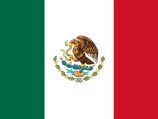The Segmental Info System
The Economy of Cancun and the Mexican Caribbean
The economy of the Mexican Caribbean has only been recently bolstered by the influx of tourism
From 300 A.D. to 900 A.D., when the Mayan civilization was reaching its peak in the Yucatán, the peninsula was used to conduct sea trade in the region. Although the peninsula was a major trading center during the Classic Period, fighting would plague the region's economy until the late 19th century.
A hacienda system that mirrored the plantation system of the Caribbean and southern United States was implemented during the reign of the Spanish in Mexico and the Yucatán. It was not until around 1880, 59 years after Mexico declared its independence from Spain, that the Yucatán peninsula had a source of wealth and income that would fuel its economy. Henequen, a strong fiber used to make ship hawsers, hammocks, and burlap bags, became the source of wealth and prosperity in the Yucatán between 1880 and 1940. Mayan peasants were primarily used to work on the plantations that harvested the leaves that make the fiber. This period of economic prosperity made the Yucatán and Quintana Roo one of the wealthiest areas in Mexico before World War II.

The chicle harvested on Cozumel around the beginning of the 20th century also brought economic prosperity to the region, as the proliferation of chewing gum increased the demand for this product from the sapodilla tree. Even after chicle demand waned, the positioning of a United States air base on Cozumel during World War II kept the local economy relatively strong.
After World War II, the region experienced a drastic turn in its economic fortunes, and impoverishment spread and forced many to leave areas such as Cozumel. In 1961, however, Jacques Cousteau put Cozumel brightly on the tourist map with a stunning documentary about the reefs and seascape surrounding Cozumel. In the same decade, in 1968, the Mexican government declared that Cancún would be the site of Mexico's largest tourist development. Construction on hotels and tourist establishments began almost immediately, and tourists began swarming to the island in 1974.
Since the emergence of the Yucatán and the Mexican Caribbean coast as a playground for Caribbean tourists, the economy and population of the region have flourished.
Help us improve! We welcome your corrections and suggestions.

-
Best Hotels For... >>
Dining Options
Entertainment /
NightlifeFamily Vacations
Swimming Pools
Tennis
Hotels by Star Rating >>
5 Star Hotels
4 Star Hotels
3 Star Hotels
2 Star Hotels
1 Star Hotels
More... >>
Camping & Eco-Tourism
Reservations
Search
-
More... >>
Golf
Sports
Tennis
Other Activities
-
More... >>
Customs
Driving
Electricity
Embassies
Health
Hours of Operation
Passports
Postal Services
Telephones
Tipping
Tourist Offices






_flag_thumbnail.jpg)




















_thumbnail_right.jpg)

